Sometimes in life, the most momentary mistakes can have the longest-lasting consequences.
An offhand remark that hurts a friend’s feelings. A secret revealed that breaks someone’s trust. Or in the sim racing world, a slight miscalculation that shatters your own confidence.
For my teammate Karl and me, we’ve each dealt with the latter, and at the same track, no less. Mount Panorama in Bathurst, Australia, is known around the world as one of the most difficult circuits due to its extreme elevation changes and blind corners, all surrounded by unforgiving walls that punish even minor mistakes.
If hotlapping around the mountain is madness, then running an endurance race there must border on insanity. And on multiple occasions, we’ve been crazy enough to try – and human enough to fail.
My big mistake happened three years ago during our first attempt at the Bathurst 12 Hours. After a top-twelve qualifying run, I threw away a promising start on the first lap, clipping the inside wall at Forrest’s Elbow on the way down the mountain. That 12-hour attempt lasted barely one minute.
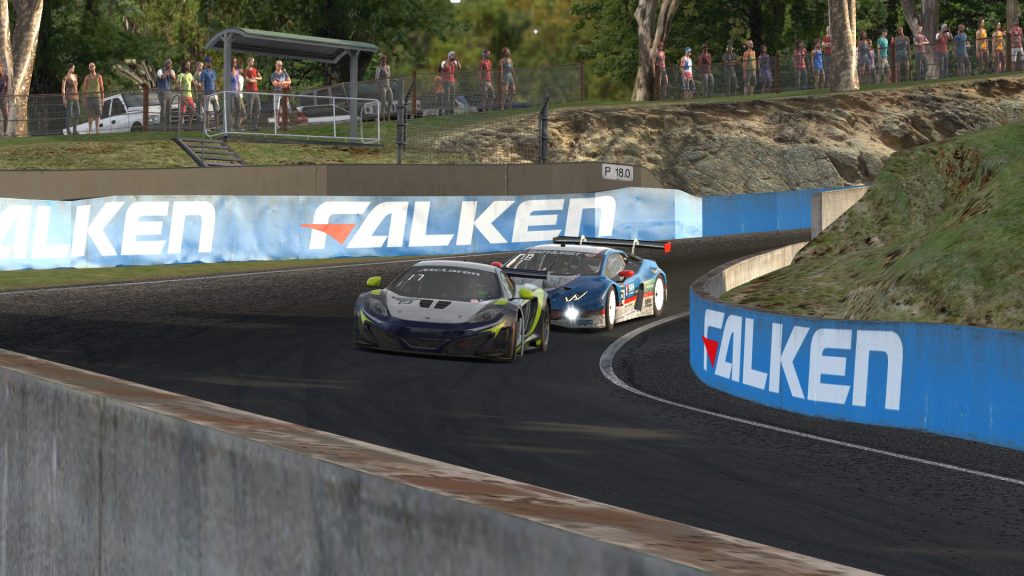
Karl’s Bathurst bobble dates back even further, to the Masters of Endurance Series’ six-hour finale in 2015. After taking over the car halfway through the race, a moment of oversteer exiting the tricky turn 9 sent him sliding sideways and into the inside wall, ending our best run of the season with a crumpled car.
We’ve also found success together at Bathurst, finishing on the podium in the 2019 Bathurst 1000. However, success – and survival – in a GT3 car during a longer endurance race remained elusive. Entering last weekend’s Bathurst 12 Hours, we set out to change that and soften the sting of past mistakes.
In our previous endurance race, we earned a surprising second place in October’s Petit Le Mans with limited practice and setup work ahead of time. But such a casual approach wouldn’t work well at Bathurst, which requires inch-perfect precision committed to muscle memory and an acute awareness of the likely trouble spots.
It’s why we failed in our previous endurance attempts, getting overconfident and overaggressive on the savage slopes. And it’s why we succeeded in the V8 Supercar, treating that unfamiliar equipment with extra care around the punishing Mount Panorama circuit.
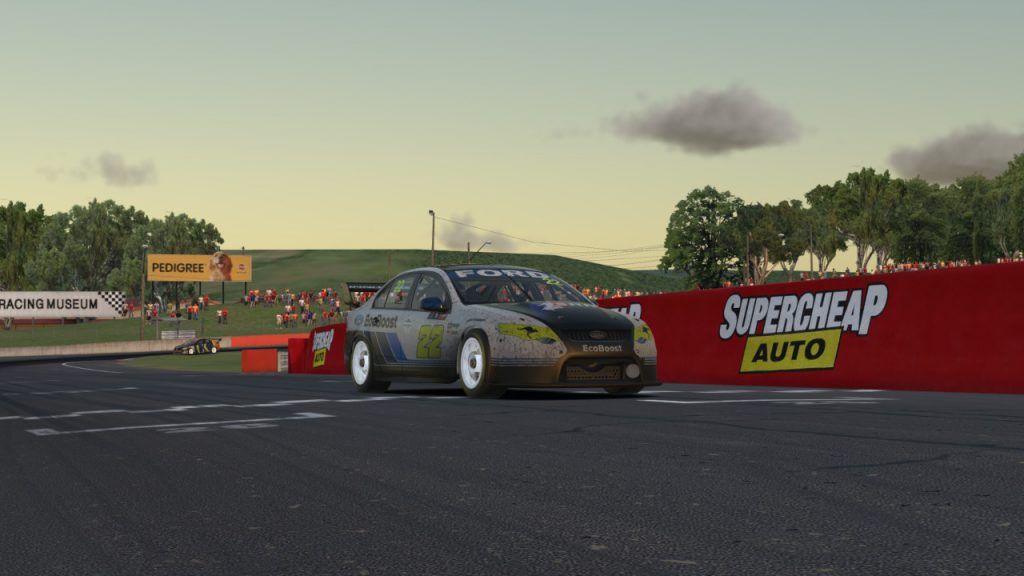
In the lead-up to this year’s race, we focused on finding both speed and stability, decreeing that we were racing the track rather than any particular team.
We identified the corners most likely to cause problems, including the high-speed turns 9 and 10 atop the mountain, where the outside kerbs can easily send a car spinning; the downhill descent through Skyline, where getting behind on braking is almost a guaranteed crash; and the wall-lined Forrest’s Elbow, where cutting too much or tracking out too wide can be a race ender. I should know.
I promised Karl I wouldn’t hit that inside wall again. But despite all of our preparations, I couldn’t promise much else entering the race.
This time, qualifying was a struggle, and I managed only 34th in the pre-dawn session. That would put me in a precarious position at the start, as any accidents ahead would likely lead to an unavoidable pile-up.
With a shot at redemption driving a starting stint at Bathurst again, I had a low bar to clear. Just completing the first lap would be better than I managed last time. Even that was a challenge, as multiple spins and crashes ahead partially blocked the track on the narrow road over the mountain.
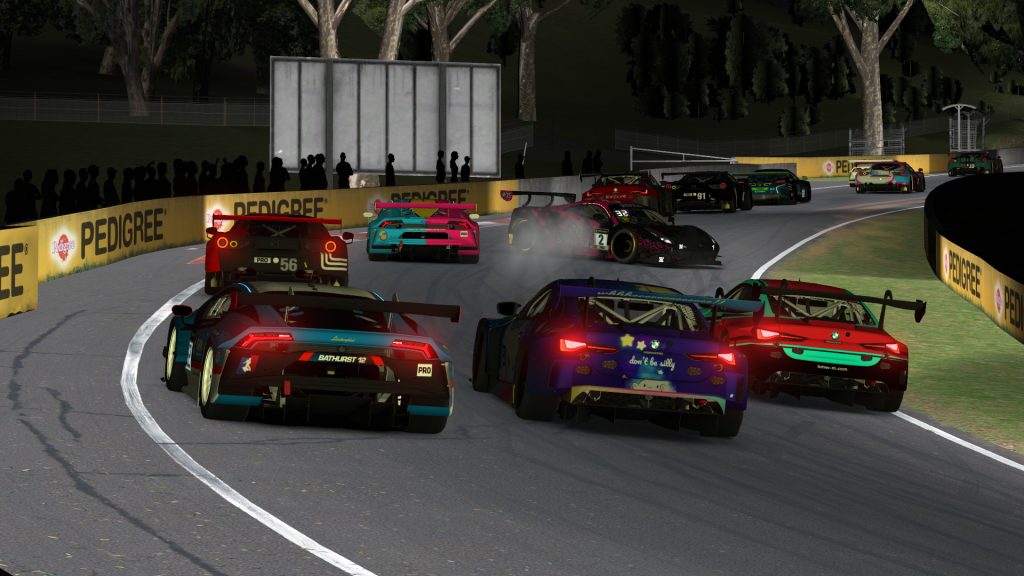
At times, I had to slow to a stop and wait for a lane to open. In the process, I dropped back ten positions to 44th. By completing the first lap with no damage, though, our calculated caution was already paying off.
Between dodging other spins and methodically passing cars ahead, I had already recovered to my original starting spot within the first half-hour. The rest of the first stint brought more gains, and after the first pit stop, I found a comfortable position to run in and log laps as darkness gave way to morning.
Unfortunately, then came an obstacle for which we had no plan. Midway through my second stint, a car just ahead of me spun at the Dipper and blocked the road.
As I arrived on the scene, even slamming on the brakes wasn’t enough to mitigate my momentum. I center-punched a fellow Lamborghini in the door, which flattened our front bumper and ripped off our hood.
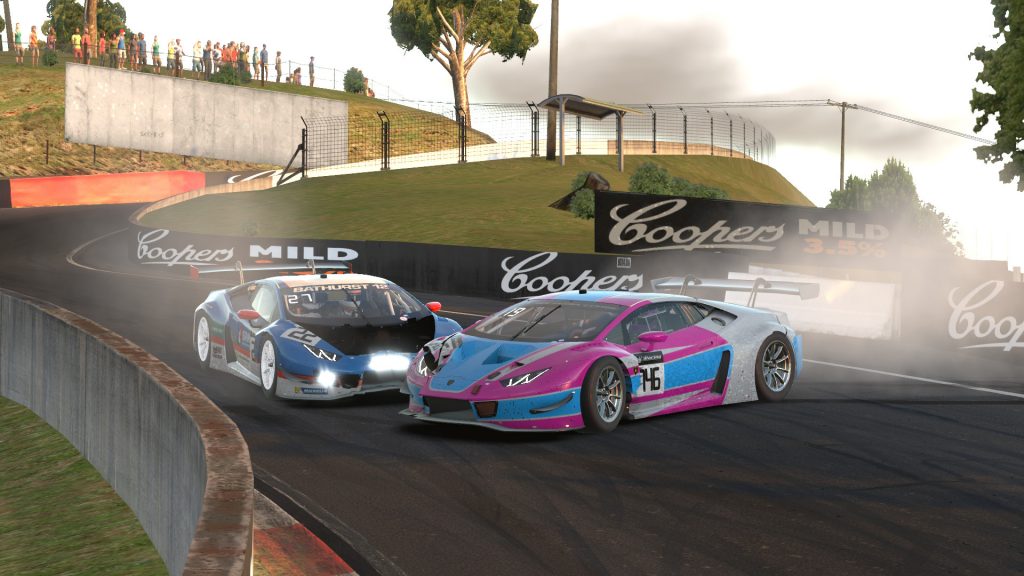
The extent of the damage was slow to reveal itself thanks to the draft that initially buoyed my lap times. However, after being passed and facing clear track ahead with a snow-plow front end, our top speed disadvantage became clear.
Karl and I resigned ourselves to making repairs, but hoped a new hood would at least curb any aerodynamic disadvantages. After falling two laps down during our next pit stop, Karl rejoined the track, only to find the car was still off pace.
With any hopes of a high finish gone, we resolved to take the full 5 minutes of remaining repairs and try to claw back positions from attrition alone as some of our competitors inevitably crashed short of the finish.
Four laps down and in 29th, the thought of driving nine more hours out of contention made climbing the mountain feel like a truly Sisyphean task. But while success would again elude us on this day, we could still manage survival and exorcise those bygone Bathurst blunders.
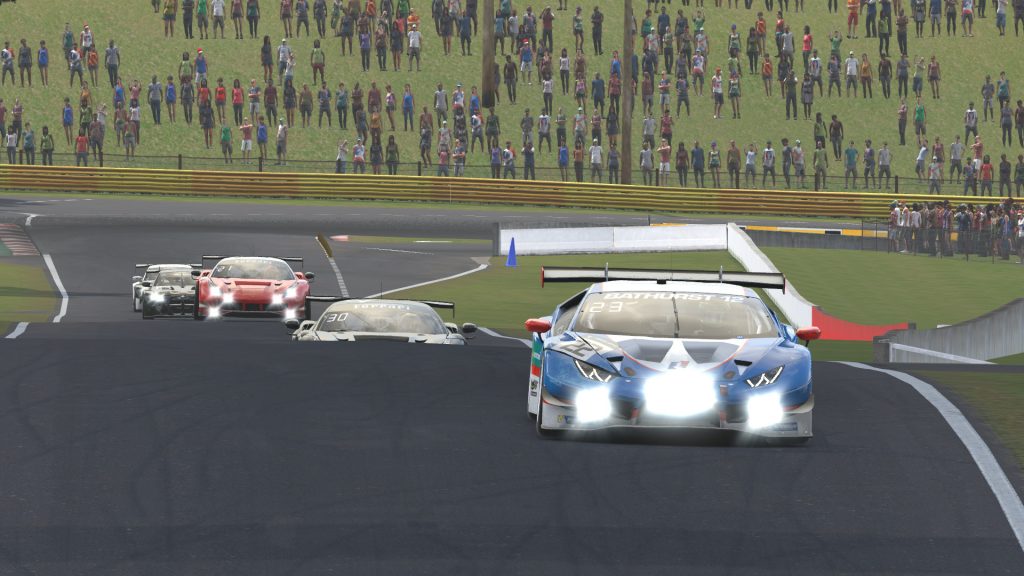
Through the hottest part of the race, our slow advance continued. A Porsche in the wall at Skyline? That’s a position. A BMW with suspension damage? That’s a position. A Ferrari face-planting at the final corner? After a few clean laps to claw back lost time while they made repairs, that too was a position.
By the six-hour mark, we were up to 23rd. With less than four hours to go, we entered the top 20. We picked up our final position with an hour and a half left, when a collision on the mountain sent a highly placed Ferrari into the wall and back to the garage.
As darkness again fell over the mountain in the final hour, we had no sneaky strategy plays to gain another spot, nor any fears about being caught in the closing laps. We just kept driving and eventually came home in seventeenth – five laps adrift of the leader, more than a lap behind the next finisher, and four laps in front of the car behind.
In total, 25 teams, or exactly half of the starting field, finished the race. On this day, being part of that group would be our only achievement, but it’s one we had waited years to finally realize.
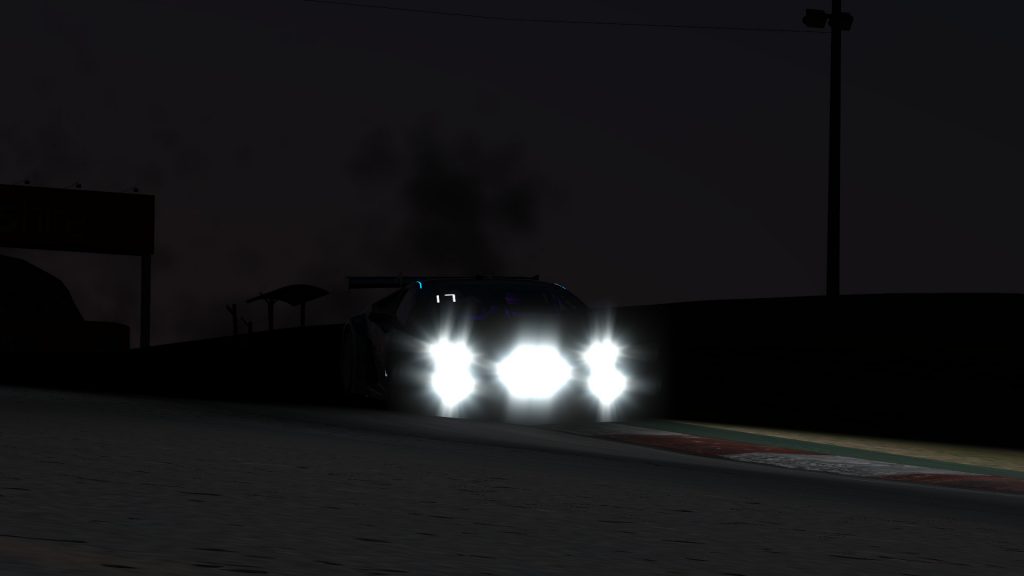
While we each had a couple of brushes with the barriers, we had no additional repair time after the first two hours. Our cautious approach had paid off to the point that neither of us worried about the other person crashing at those potential trouble spots we identified before the race.
It wasn’t our best result – far from it, actually – but we could still be proud of completing 336 laps in 12 hours around Bathurst with no self-inflicted damage, and not giving up even after our early setback.
Of course, that also left us wondering what if that loopy Lambo hadn’t blocked our path in the second hour. Perhaps we would have continued our climb all the way into the top ten. Or maybe the pressure of close competition would have gotten the better of us, tempting us to eschew our more measured mindset in favor of a faster but riskier one.
We can only hope to have that opportunity next year. As for this time, despite a less-than-stellar result, I kept my pre-race promise. I never touched the Elbow wall all race, and in the process, I made that years-old mistake a distant memory.